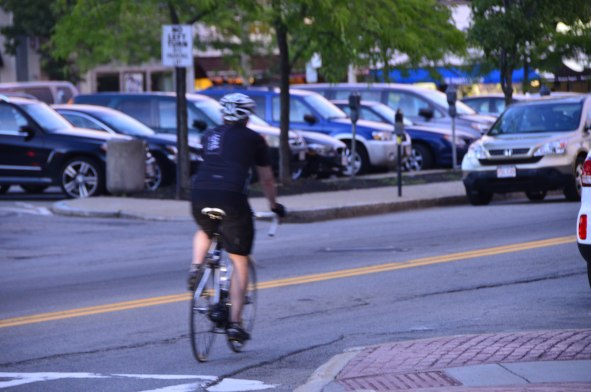
Years ago, when I decided to try my hand at bicycle racing, an old-timer uttered these words to me as a warning: “don’t sit in your saddle like a sack of potatoes.” I chuckled at the image this expression conjured up in my mind. And his words have stayed with me to this day.
A sack of potatoes seemed like something you’d see on a farm, not in the urban area where I was training. In fact, I’d only seen sacks of potatoes in the movies.
The old man had certainly gotten my attention. I was listening to what he was going to say next to explain what riding a bike like a sack of potatoes meant.
Well, he did explain it. And what he said made a lot of sense.
First, he spoke about bike handling. He made the point that moving forward and backward on the saddle served a purpose.
When climbing on long ascents, he suggested sliding back on the saddle and sitting more upright to open the chest. This would make it easier to breathe. It would also allow spinning up the hill in a low gear, which made this position less tiring than staying put on the saddle and pumping away until you were blue in the face.
Then, he spoke about aggressive riding. Moving up a bit on the saddle and crouching in an aerodynamic position would allow one to gain a speed advantage — or so he believed. This position did put the legs more squarely over the pedals and made accelerating easier. I tried it at his suggestion and thought it might come in handy someday.
After this, he moved on to explain how getting out of the saddle, to a greater or lesser degree, helped one maneuver a bike with finesse. To prove his points, he demonstrated this technique on a winding, hilly course.
He was in and out of the saddle to gain momentum at the start of a climb, to situate himself before a hairpin turn, and to make delicate moves which allowed him to position himself perfectly in the presence of other cyclists.
In other words, by not sitting in his saddle like a sack of potatoes, his riding was fluid. He was part of the bike and one with the movement of the bike. In essence, his body, the bike and momentum worked as a team.
What was even more fascinating was his take on how this approach affected the bike itself. He recommended getting out of the saddle at every bump or pothole in the bike’s path. He had trained himself to anticipate each bump and perfectly timed standing on the pedals and pulling up sharply on the handlebars to leap over any pothole or gross imperfection in his way.
Jumping over potholes, he told me, was a good way to prolong the life of a bike. The lack of sudden jolts and vibration put less strain on the frame and fork, which he was certain would last for an eternity with such care.
Of course, at that time, most frames were made of steel. And well cared for steel frames can last a lifetime, maybe two. So, there was probably some merit to his claims.
I don’t race anymore. But whenever I come to a large, unavoidable pothole, I hear the old-timer’s words in my mind “don’t sit in your saddle like a sack of potatoes,” after which I rise out of my saddle, pull mightily on the handlebars and hurl my bike over the crater with barely a jolt to my frame.
Who knows? Maybe if I engage in this ritual every time I encounter a pothole, my bike will last forever. If not, at least I can pride myself in knowing that I don’t ride a bike as if I were a sack of potatoes.


